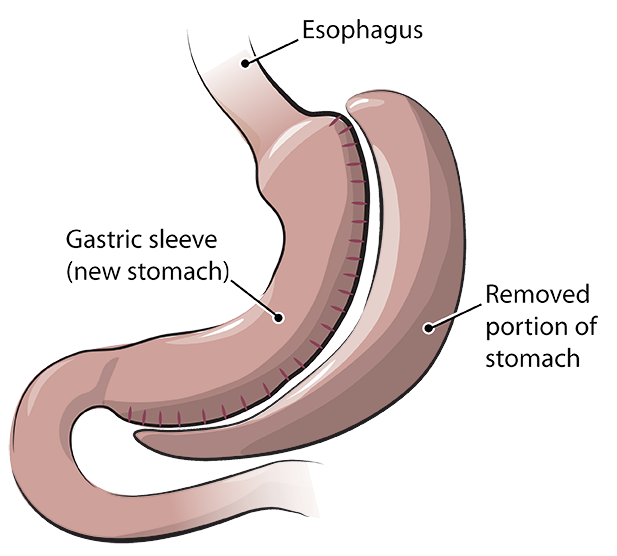Gastric Sleeve Surgery
Sleeve gastrectomy is a surgical weight-loss procedure in which the stomach is reduced to about 25% of its original size, by surgical removal of a large portion of the stomach along the greater curvature. The result is a sleeve or tube like structure.
Today sleeve gastrectomy is the fastest growing weight loss surgery option in North America. Sleeve gastrectomy is as effective as gastric bypass surgery, including weight independent benefits on glucose homeostasis.
The precise mechanism(s) that produce these benefits is not known. The sleeve gastrectomy is performed laparoscopic and Robotic. It is safe and effective.
During this procedure, also known as a “sleeve gastrectomy,” approximately 85 percent of the stomach is removed, leaving a stomach shaped like a narrow tube or “sleeve”. This causes weight loss by restricting the amount of food that can be eaten, which means the patient starts to feel full after smaller portions of food.
This is a permanent surgical solution that is most applicable to morbidly obese patients with a BMI above 40, or between 35 and 40 combined with other related health problems. With a gastric sleeve, the stomach function is largely preserved, so the patient can tolerate many of the same foods as before the surgery, but in smaller portions.
Because the upper portion of the stomach, which produces the hormones that stimulate hunger, is removed, appetite is suppressed for a few months after surgery. Moreover, the pyloric (outlet) valve is preserved, so dumping syndrome (the passing of undigested food into the small intestine) is minimized.
This procedure does not involve the insertion of any device into the body and can be performed laparascopically in most patients. This reduces the recovery time and most patients go home after just one day in the hospital.

